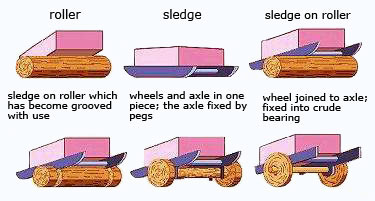How does a catapult is able to make a stone fly off at high speeds ?
Catapult has been used by many tribal and indigenous people around the world to hunt and hit a pray at a distance.
How does a catapult work?
Catapult has a stretchable strip of material tied loosely on two vertical sticks. The strip is elastic. It can be pulled and stretched. This increases the potential energy within the strip. More precisely the elastic potential energy is increased. The sticks of the catapult is generally held on one hand (say the left hand) and a stone is held within the elastic strip on the other hand (say the right hand). The right hand pulls the elastic strip along with the stone. The stone is released when the left hand jerks the catapult sticks. The strip and the stone are propelled forward due to this action. The elastic potential energy stored within the strip is converted into kinetic energy of the stone. If you let go the stone from the right hand, the effect will not be same. This is because the stone and the elastic strip have to be one and the stone should acquire or adopt the potential energy of the elastic strip.
A catapulted stone can have high speed, with which a bird or a rabbit can be hit and hunted from a distance.
How does a jack-in-the-box jump up?
Jack-in-the-box is a good demonstration how potential energy is transformed into kinetic energy. A jack or a joker is mounted on a spring. The spring is compressed and the jack is placed in a box that has a tight lid. The compressed spring has potential energy stored in it. The potential energy can be termed as elastic potential energy. As soon as the lid is opened, the tension in the spring is released. The potential energy of the spring is transformed into kinetic energy of the jack and the jack appears to jump up outside the box.
Why are water storage tanks placed high on the roofs?
In India, most of the houses have a water tank high on the roof. The water is pumped up into the reservoir and stored. When there is a need to use the water, the taps can be opened to have a flow of water. The potential energy of the water stored at a height is converted into kinetic energy when the water flows through the taps. In developed countries such overhead water tanks are not seen because the water pumping station is continuously pumping water (that is giving it kinetic energy) so that the domestic users can have water at their taps whenever they require.
How was the wheel invented ?

Invention of the wheel has been one of the greatest landmark achievements for the progress of human civilization. Many people today take for granted the very means of travel available to them. Few stop to think of how life would be different had man never tamed that first wild horse, or shaped that very first wheel. How did ancient man hit on these far reaching ideas?
The oldest wheel known was discovered in Mesopotamia and dates back to 3,500 B.C. This wheel was believed to have been made by the Sumerians. It was made of planks of wood joined together.
Early men began to place runners under a heavy load, which they discovered would make it easier for the load to drag. This was the invention of the sledge. Later they saw that logs of wood could be rolled from one place to another easily. Men perhaps began to combine the roller and the sledge. As the sledge moved forward over the first roller, a second roller was placed under the front end to carry the load when it moved off the first roller. Soon, it was discovered that the rollers, which carried the sledge, became grooved with use. These deep grooves actually allowed the sledge to advance a greater distance. Eventually the rollers were changed into wheels. In the process of doing so, wood between the grooves of the roller were cut away to form an axle and wooden pegs were fastened to the runners on each side of the axle. Over centuries improvement was made to the cart so that axle and wheels could be made separately. The Egyptians, later made wheels with spokes, around 2000 BC. In India, chariots with spoked wheels dating back to around 1500 B.C. were also discovered.
When a car turns, it is required that the wheels on the inner side have to rotate slower than the wheels on the outer side. How is this achieved?
Let us say that a car is making a right hand turn. You can appreciate that because of the width of the car, the wheels on the right side of the car have to move a shorter distance along the curve, than the wheels on the left-hand side of the car. Wheels are mounted on an axle, which is connected to the engine.
As the engine rotates, the axle is rotated and so are the wheels. This scenario is easy to understand while the car is in linear motion. What happens to the engine–axle–wheel rotation connection when the car is negotiating a turn? Well, bevel gears come into picture. They ensure that the direction and speed of rotation on the two sides of the car are separated in a certain ratio. This action takes some time. The road designs ensure that the turns are not sharp at right angles and also one is advised to slow down at a turn due to the same reason.